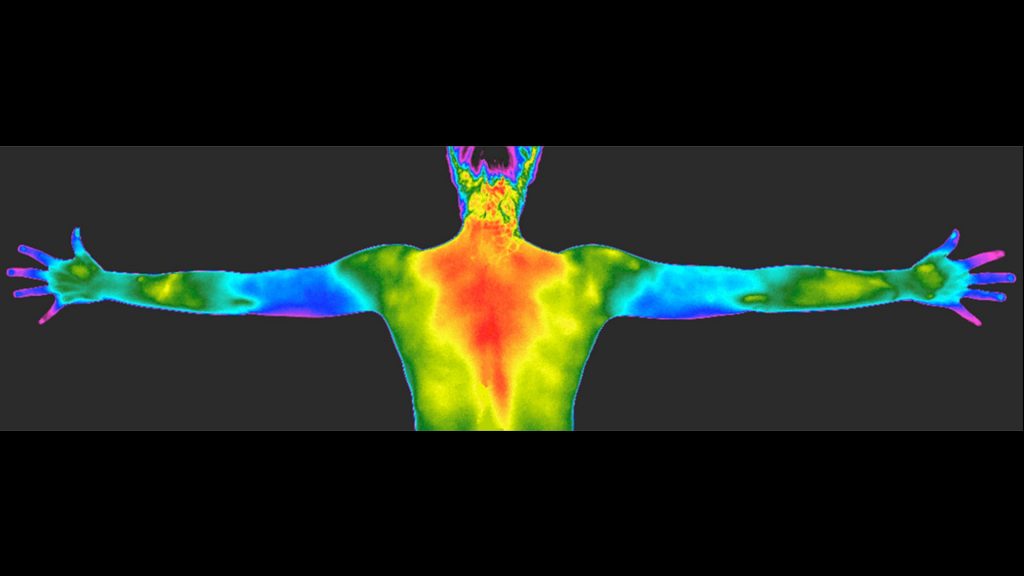
Things get hot when their molecules vibrate, and when they do, they give off electromagnetic radiation. The faster the molecules vibrate, the higher the frequency (and the shorter the wavelength) of that radiation.
The sun is very hot and emits high frequency radiation in the part of the spectrum that we can see. The molecules in our own bodies are lower in temperature and vibrate more slowly, giving off electromagnetic radiation mainly in the infrared region.

When astronomer and composer William Herschel (1738-1822) discovered invisible light beyond the red end of the visible spectrum in 1800, he referred to it as “heat rays” because the instrument that detected it was a thermometer.

We now have Infrared cameras that capture this invisible light and translate it into visible light. The resulting image may resemble what our eyes see in unfamiliar colours, but in fact it offers us sensory information unlike any that we have: a true sixth sense – heat vision!

Emmett Place, Cork, Ireland
T12 TNE6
Tel: 021 480 5042
info@crawfordartgallery.ie
Opening Hours
N.B. Last entry is 15 minutes before closing
Monday–Saturday 10.00am–5.00pm*
Thursday until 8.00pm
Sundays and Bank Holidays
11.00 am–4.00pm
© 2024 www.crawfordartgallery.ie